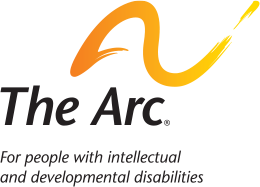Spotlighting The Arc’s Changemakers: Burt Hudson, Treasurer of the Board of Directors
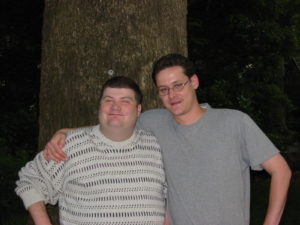 Family is at the heart of Burt Hudson’s connection to The Arc.
Family is at the heart of Burt Hudson’s connection to The Arc.
Burt’s younger brother John, who he introduces as “my best friend for as long as I’ve been alive,” has an intellectual and developmental disability called WAGR syndrome. His love for John is boundless, but as a teenager, Burt was mad at the world for giving John a more difficult path, including a near-death experience. But John always brought Burt’s life back into focus because he was his rock. As he shares, “I am the man I am today in many ways because of my brother.”
Burt’s life came full circle when he and his wife Kim welcomed their first child, Jack.
Despite genetic testing showing the absence of trisomy during pregnancy, Burt and Kim were surprised to learn that their “beautiful little guy” had Down syndrome at birth. As Burt reflects, “The night Jack was born, I said to my wife, ‘Without my brother in my life, I would have never become the man you would have married.’” Burt and Kim didn’t hesitate about the road ahead because “There is no playbook for anyone… If you love your child as much as you can today, tomorrow will get figured out. And just like my brother, we’ll watch Jack change the world for the better.”
 Jack is now 9 years old and, despite a speech delay from childhood apraxia of speech, he is a complex, smart, and kind third grader. He loves riding horses, dancing to Bruno Mars and Maroon 5, drumming, and acting out Muppets movies. He also has a 6-year-old younger brother, James, and “They have been a duo ever since James was born.” Burt recalls a memory from his childhood when he and his brother were wrestling in the ocean, showing John was just another sibling. The same camaraderie is seen between Jack and James.
Jack is now 9 years old and, despite a speech delay from childhood apraxia of speech, he is a complex, smart, and kind third grader. He loves riding horses, dancing to Bruno Mars and Maroon 5, drumming, and acting out Muppets movies. He also has a 6-year-old younger brother, James, and “They have been a duo ever since James was born.” Burt recalls a memory from his childhood when he and his brother were wrestling in the ocean, showing John was just another sibling. The same camaraderie is seen between Jack and James.
Burt’s mom has “always strived to make sure John can live an independent life.” That’s why she has long been involved in advocacy efforts with The Arc’s chapters in Georgia, where Burt grew up and John now lives in an inclusive group home not far from his parents and brother. As Burt shares, “he’s very proud to be a man on his own.”
It wasn’t until his adulthood, though, that Burt’s mom asked him to participate in a plane pull fundraiser for her chapter of The Arc. Burt eagerly flew to Georgia to pitch in. He hit it off with the Executive Director, who fatefully connected him to The Arc of Virginia, where he has served on the Board for 13 years and still going strong. After Jack’s birth, he became even more passionate about his role as a volunteer. “In the midst of the exhaustion, I decided I had to do more for The Arc. So, I went on to The Arc of the United States’ website and saw an application for joining the Budget and Finance Committee. Over the years, I got to know several staff and board members and was asked to join the Board.”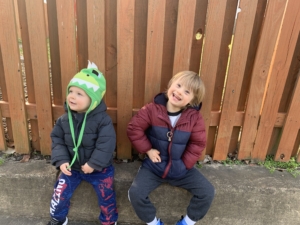
Burt’s career has also been influenced by John and Jack. He is COO of LeadingAge, a community of service providers for older adults and people with disabilities. “As a compassionate society, we must take care of others. I’ve never known anything different.”
What continues to drive Burt’s involvement in The Arc is gratitude for the progress made for people with disabilities. He shares, “It is gut-wrenching what our society has done to people with disabilities historically, and it’s frightening to ever try to picture my brother or my son living in those kinds of conditions. I don’t know how people started to right those wrongs, but I know The Arc was at the forefront of it. So, I give back to The Arc in any way I can because it’s done so much for people like my brother and my son. The best part is that the people we serve are sitting next to me at the table. The Arc is led by people with disabilities and caregivers, which I find unique and special. I’ve met a lot of people through The Arc and the ones who make the biggest impact on me are those who have disabilities. These are the people who tell me how I can help The Arc. When my son was born and I had my own health challenges, these same people supported me. All these people had the Hudsons’ back and I’ll continue to have theirs.”
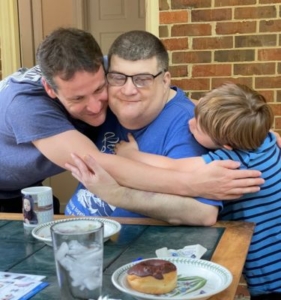 Burt wants people with disabilities and their loved ones to know they can always turn to The Arc for guidance. “The Arc is a wonderful resource full of wonderful people, one that generations of families have relied on to find the path they need to be walking.” As Treasurer of our national Board, Burt is heartened to see The Arc remain strong through the decades. “There’s a lack of compassion and a lack of love all around us, and The Arc is the heart of this country. It shows the strength we have when we’re banded together with a common cause and love for each other. The consistent light The Arc has provided gives me comfort and hope that we’ll get through anything.”
Burt wants people with disabilities and their loved ones to know they can always turn to The Arc for guidance. “The Arc is a wonderful resource full of wonderful people, one that generations of families have relied on to find the path they need to be walking.” As Treasurer of our national Board, Burt is heartened to see The Arc remain strong through the decades. “There’s a lack of compassion and a lack of love all around us, and The Arc is the heart of this country. It shows the strength we have when we’re banded together with a common cause and love for each other. The consistent light The Arc has provided gives me comfort and hope that we’ll get through anything.”
Thanks to The Arc and its advocates, it’s easy to imagine a bright future for Jack. Burt shares, “My hope for both my kids is to find the best happy path for their lives. I want Jack to live a full and independent life just like my brother John.”
He sums up, “I volunteer as a thank you to the entire federation of The Arc. I don’t think there’s a way to appropriately thank everyone for what they’ve done for my brother and my son. There’s no way to say thank you enough, but I’ll keep volunteering my time until I figure it out.”

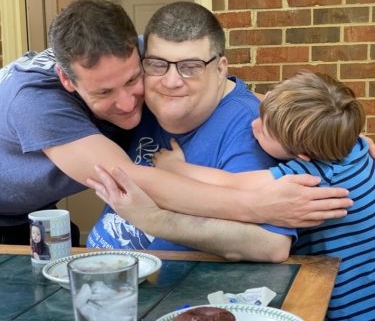
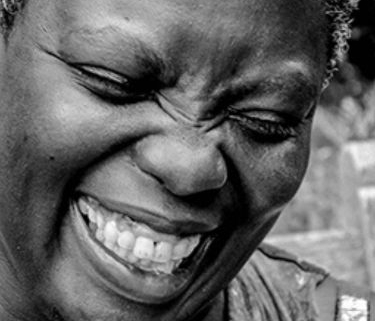
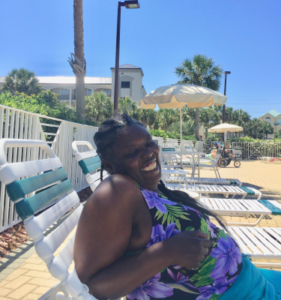

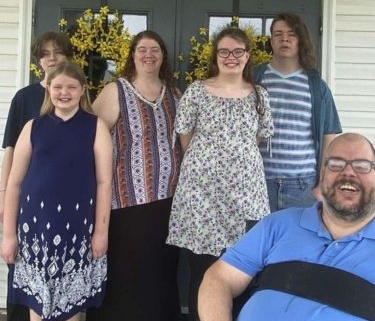
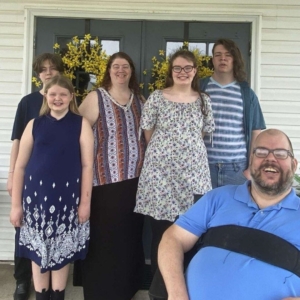 This Father’s Day, we’re celebrating Mike, a dad whose unconditional love and devotion are redefining society’s views on parenthood. Born with cerebral palsy, Mike has navigated life from a wheelchair, facing prejudices that often wrongly question the ability of those with disabilities to raise children.
This Father’s Day, we’re celebrating Mike, a dad whose unconditional love and devotion are redefining society’s views on parenthood. Born with cerebral palsy, Mike has navigated life from a wheelchair, facing prejudices that often wrongly question the ability of those with disabilities to raise children.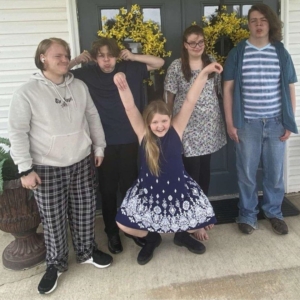 His disability has no impact on his ability to empower his children’s pursuit of interests and passions, from sports to church activities. He also teaches life skills and moral values to youth as a deacon and youth counselor at his church and a coach for Junior Church. His ultimate advice to other parents with disabilities? “God chose you to raise this child – you can do it! Keep working at it and don’t give up.” His oldest is already planning for his future, with his sights set on graphics design or counseling.
His disability has no impact on his ability to empower his children’s pursuit of interests and passions, from sports to church activities. He also teaches life skills and moral values to youth as a deacon and youth counselor at his church and a coach for Junior Church. His ultimate advice to other parents with disabilities? “God chose you to raise this child – you can do it! Keep working at it and don’t give up.” His oldest is already planning for his future, with his sights set on graphics design or counseling.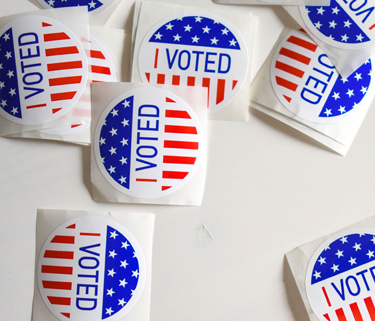
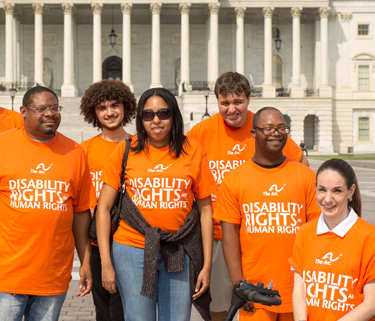
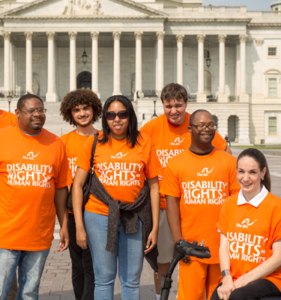 For some, August can be a time for camping trips, beach days, and other fun summer activities. But for members of Congress, August signals the start of Congressional Recess. During August recess, U.S. senators and representatives leave Washington, DC, and travel to their home states and districts to begin a fast-paced schedule of constituent meetings, town halls, and other community events.
For some, August can be a time for camping trips, beach days, and other fun summer activities. But for members of Congress, August signals the start of Congressional Recess. During August recess, U.S. senators and representatives leave Washington, DC, and travel to their home states and districts to begin a fast-paced schedule of constituent meetings, town halls, and other community events.